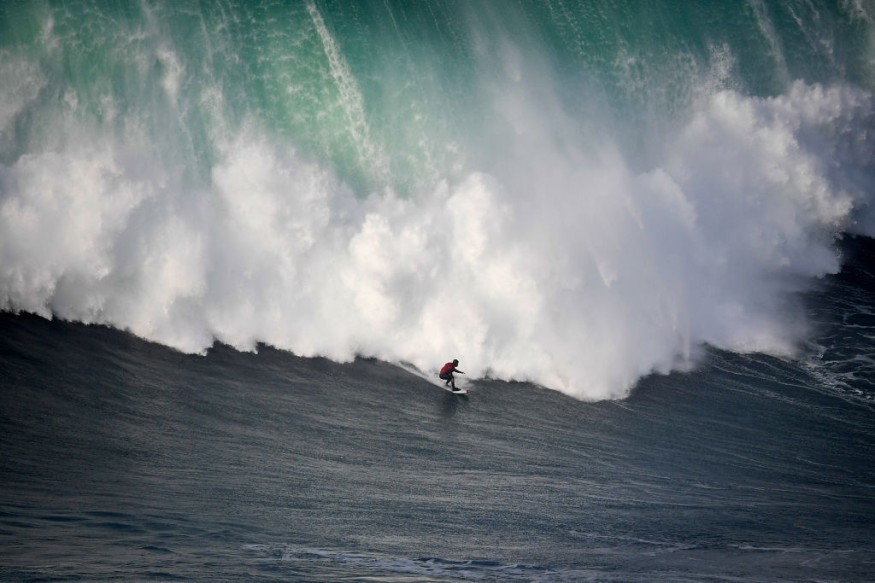A satellite image taken in 2020 captured a "monster wave" in the Portuguese coast near Nazaré, crashing towards the shore. At the same time and day, an 18-year-old surfer reportedly rode a massive 101-foot-wave, a potentially record-breaking swell.
The big coast of Nazaré is known to have the largest submarine canyon and considered by some to be among the best in Portugal. The undersea canyon just off the coast of Nazaré, Portugal, in the eastern North Atlantic Ocean is the largest underwater canyon in Europe.
On Oct. 29, 2020, a NASA satellite (Landsat 8) captured the massive waves along the famous North Beach (Praia do Norte) - widely considered to be one of the world's best locations for big-wave surfing. The waves on that day in particular were enhanced by high winds from the remnants of Hurricane Epsilon, causing the monstrous seven-story-high wave, LiveScience reported.
A Portuguese surfer's record-breaking ride

Portuguese surfer António Laureano who was just 18 years old at the time told Surfer Today about the massive wave, and sent a video of it to researchers at the University of Lisbon in Portugal for analysis. The young surfer believed it was the biggest of the day.
"As soon as I started to ride that wave, I realized it was massive," Laureano said. "But it was only when I kicked out [finished surfing] that I understood what I had accomplished."
And he wasn't wrong. Miguel Moreira, an oceanographer at the University of Lisbon, also told Surfer Today in 2020 that the wave measured 101.4 feet (30.9 m) high, the largest wave ever surfed by a human, although it was not officially recognized by the World Surf League (WSL) because of how the researchers measured it using the height of the surfer as a scale reference "and then look for the crest of the wave [the highest point] and the trough [lowest point]," Miguel explained.
WSL officials measure the height of waves compared to sea level either from the shore or behind the wave as it breaks. Unfortunately, in Laureano's case, no WSL officials were at Nazaré on that day, so the record remains unverified.
Also read : Pantagonia Glaciers Melting at Alarming Rate, Marking Largest Glacial Changes in History
Monstrous waves off the coast of Nazaré
Surfer Today explains the Nazaré Canyon geomorphologic phenomenon and the size of its local waves, and how the once-quiet village turned into a world-renowned big wave surfing arena.
"First of all, it's important to highlight the most common swell direction in the region - west and northwest," the website said. According to the website, the prevailing wind from northwest to southwest is associated with atmospheric depressions. Given the east-west orientation, the headland interferes with the winds and dramatically influences the sea's dynamic conditions near the beach.
The drastic differences of depth between the continental shelf and the canyon a few miles off the coast of Nazaré also explain the giant waves. Furthermore, water current channeled along the shore - from North to South additionally contributing to wave height, among others.
Nazaré currently holds three Guinness World Records for the largest waves ever surfed by a male (Rodrigo Koxa) surfer, a female (Maya Gabeira) surfer, and a kitesurfer (Nuno "Stru" Figueiredo).
© 2025 NatureWorldNews.com All rights reserved. Do not reproduce without permission.

